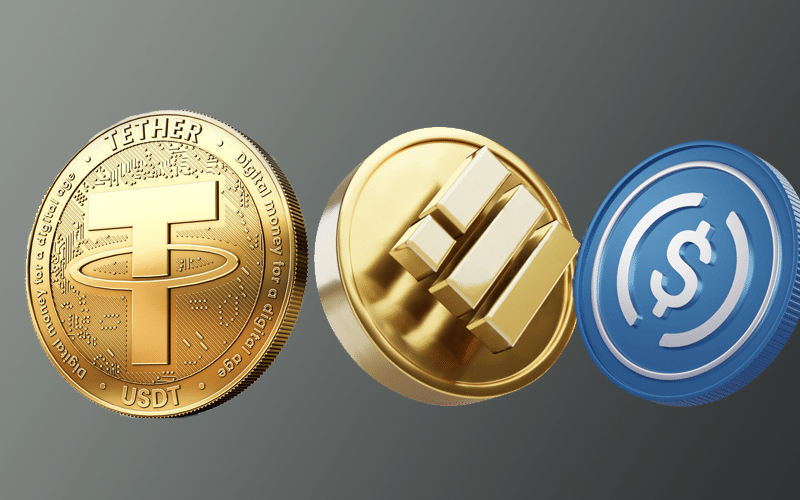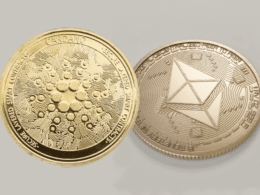USDT, BUSD, and USDC are three of the biggest stablecoins in terms of market cap totalling $107,000,000,000 with a daily volume of 88% of the total supply in a fast-growing market.
Together, they are one of the most traded and well-known cryptocurrencies. The high liquidity is a testament to their utility. Many people use it without understanding what it really is. If you are into cryptocurrency, chances are you have used one of these. To start, we need to keep in mind that they are stablecoins.
What is a stablecoin?
Stablecoins are coins that peg themself to another coin. In this case, USDT, BUSD, and USDC track the US dollars. We also have WBTC, which is backed by and follows the price movements of Bitcoin.
Unknown to many, the main purpose of stablecoins is to provide a level of stability in a volatile market. It is an embodiment of fiat in the form of a crypto asset. Investors have more confidence to invest when they know they can easily and quickly transfer their investment back to fiat value.
Another use of this is to reduce risk, especially in trading futures. A cross position might magnify unwanted losses. As a stablecoin is always pegged to the dollar, trading with it automatically means you are in an isolated position which significantly diminishes the risk when trading.
An overview of USDT
USDT or Tether is arguably the most famous stablecoin. It has the biggest market cap and the highest daily trading volume. The trading volume is USDT’s biggest strength as high liquidity generally gives traders confidence.
Much like other stablecoins, it is backed by the US dollar. Controversially, there are many doubts surrounding Tether’s transparency about their asset reserves. It promises quarterly reports, which have more-or-less been delivered as promised.
Many stablecoins have failed in the past, however, with a large number of users and a continued high daily volume, it is fair to say that Tether is backed by a large number of traders, and the chances of following the failed footsteps are low.
An overview of BUSD
BUSD is a Binance stablecoin created in partnership with Paxos – a reliable company that owns other stablecoins such as Paxos Standard (PAX). Although it belongs to Binance, a so-called third-party exchange site, it is very reliable due to the backing and regulation of the New York State Department of Financial Services. Monthly checkups are executed to make sure that the money held in reserves accounts matches the supply of BUSD to cover all investments if anything goes awry.
As Binance is a reputable exchange site, it is reasonable to put trust in them. Competition is healthy for the consumer, and Binance’s BUSD is in competition with Coinbase’s USDC. Therefore, they will look to maximise the benefits the consumer receives which, in turn, fulfils their financial goals.
Using BUSD on Binance will come with its benefits. Firstly, you can trade with lower fees. Binance often offers limited-time deals where customers who trade using their coin will not be subjected to fees or have a relatively lower fee compared to trading with other coins.
It also has staking benefits. In the Binance staking system, BUSD normally gets the highest rates when staked (at around 10% for the shortest tenure).
An overview of USDC
Whereas BUSD is a Binance managed stablecoin, USDC is managed by their ‘competitor’ Coinbase. USDC has the second-largest market cap in this category. However, the gap to Tether is still quite large.
Similar to BUSD, USDC is audited on a monthly basis by Grant Thornton LLP. This third-party audit company publishes regular reports to provide transparency for the users. Another factor that makes it stand out from BUSD is the fact that it is built on the ECR20 protocol.
As mentioned above, USDC is in competition with BUSD, and the two backing companies are trying to gain the most users. Therefore, the customer will benefit from their various deals. Much like Binance, Coinbase offers better rates and benefits for holders and users of their coins.
Main differences
One of the important distinctions between all of these coins is who they are created, supported, and regulated by. On the surface, BUSD and USDC are very similar. They are coins created by the two largest crypto exchanges – Binance and Coinbase.
The only real difference between them is that they have a different third-party audit. However, both regulators seem to have a good reputation and no evidence of a lack of transparency.
Tether, on the other hand, is not created by a crypto exchange site. Nevertheless, it has the strongest backing, evidence in the market cap and daily volume.
Although it does not have an accredited third-party regulator at the moment, Tether is rumoured to have enough reserves to cover its total market cap. This is a huge point of trust for its users. However, at the moment, this information remains a rumour.
The difference in characteristics makes each of them suitable for a different type of investor and is dependent on their goals.
Conclusion
Choosing a stablecoin is often a process that is overlooked because they are all equivalent to a dollar, right? Yet, there are many benefits that could be gained if you understand them better.
If you are looking for short-term trades, USDT will be a good option due to its high liquidity. However, if you have large monetary values of stablecoins reserved to enter the market, BUSD and USDC may be better choices as they are regulated by a third-party audit.
The difference between choosing USDC or BUSD is which exchange site you use for trading.








